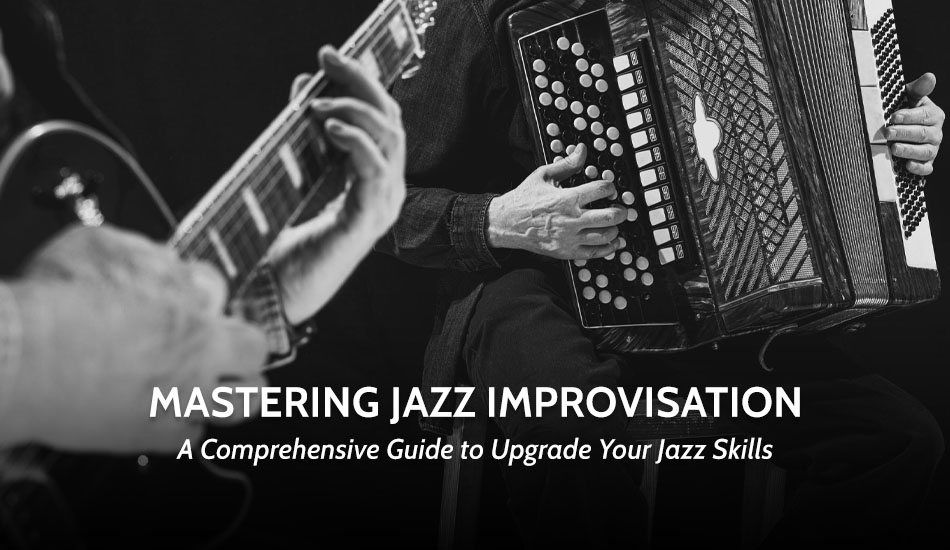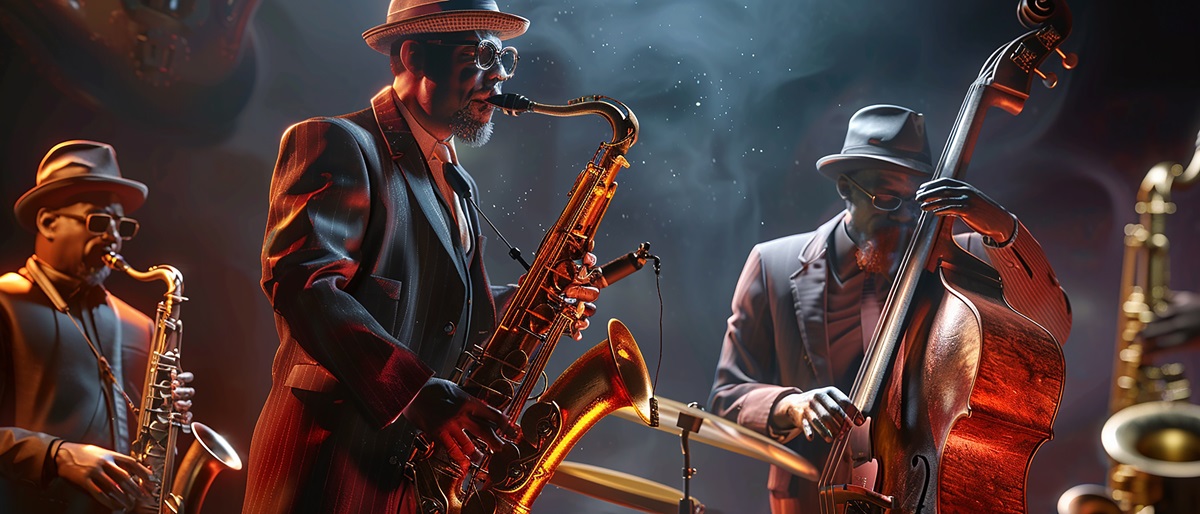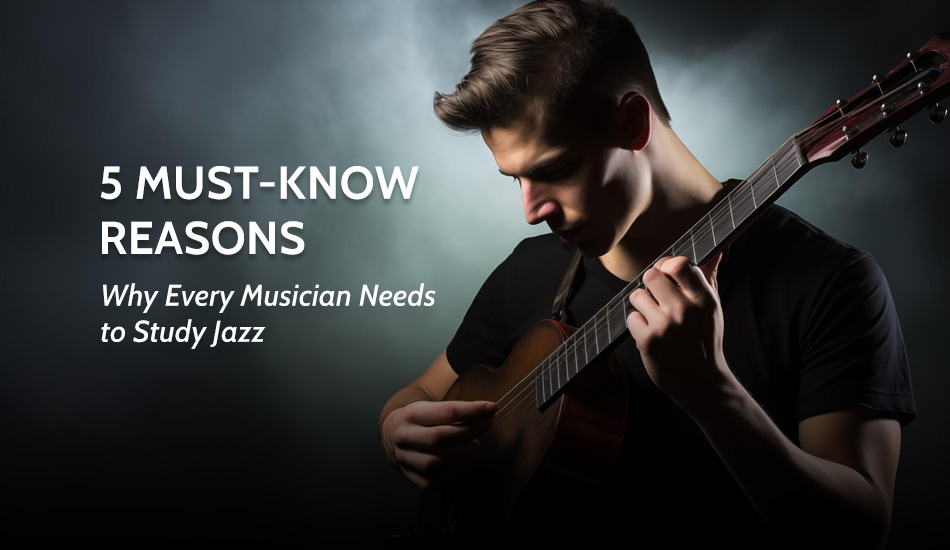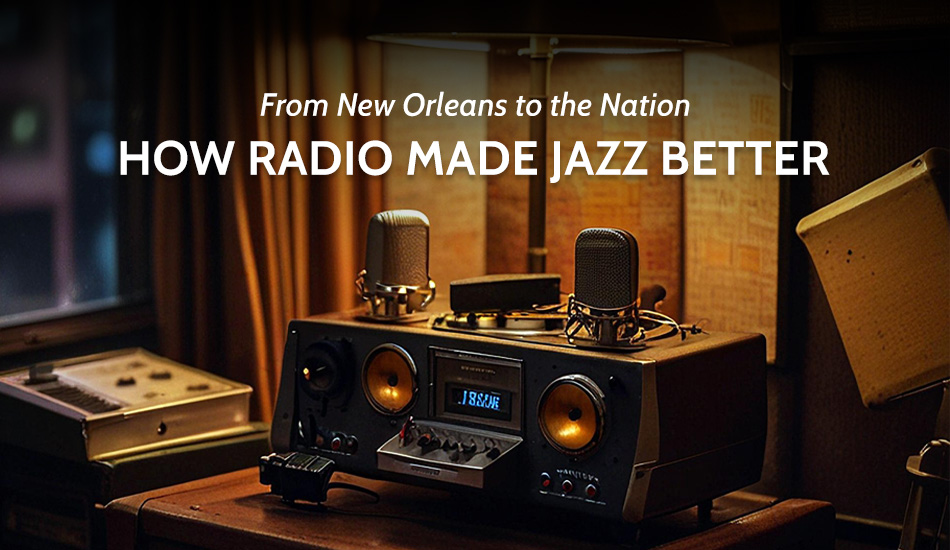
by dynamite | Oct 21, 2024 | Blog
Any musician wanting to be more creative and be an individual must learn the skill of Jazz Improvisation. It provides a means for the spontaneous musical expression of the modern jazz singer to express emotion or to express an idea in real time. Even if you’ve dabbled in jazz before, learning the foundations of jazz improvisation can be a game changer both as a new and veteran player. In this complete learning guide, we will discover the basic tools of jazz harmony, functional approaches, and implementing effective practice strategies to help you become a confident improviser.
Jazz Harmony
Jazz harmony underlies a true understanding of jazz improvisation. The framework for the spontaneous musical ideas that musicians can create through Harmony. Beyond that, having a strong understanding of harmony will help you see your way through complicated chord changes and assist you in speaking musically with other players.
Step 1: Basic 7th Chords (The Building Blocks of Jazz Music)
If you are about to pay your attention to jazz improvisation, you must first get acquainted with 7th Chords. The chords in these patterns are very important in jazz and form the basis of other harmonic structures. Here’s a breakdown of the primary types of 7th chords:
- Major 7th Chords: It can be root (Cmaj 7: C E G B) with third (C maj 7: C E G B), perfect fifth (Cmaj 7: C E G B), and major seventh (Cmaj 7: C E G B).
- Minor 7th Chords: It consists of a root, minor third, perfect fifth, and minor seventh (e.g., Cm7: C-Eb-G-Bb).
- Dominant 7th Chords: The root, major third, perfect fifth, and minor seventh (C7: C E G Bb) may or may not be considered to form the basic chord progression.
- Diminished 7th Chords: It contains a root, minor third, diminished fifth, and diminished seventh (e.g., Cdim7: C-Eb-Gb-B).
Playing these 7th chords in various keys and inversions will prepare you for your improvisation and get you tuned in to the harmony.
Step 2: Scales (aka. Pitch Collections)
Once you have 7th chords down, you move on to learning different scales. Without scales, we have literally no way of improvising; they’re important because they are the notes you can play over chords. Here are some essential scales to master:
- Major Scale: The foundation for much of Western music, consisting of seven notes (e.g., C Major: C-D-E-F-G-A-B).
- Minor Scale: It sounds darker because of the seven notes (A Minor: A-B C D E F G).
- Pentatonic Scale: A nice five-note scale that fits well over a lot of chord progressions (e.g., C Pentatonic: C, D, E, G, A).
- Blues Scale: Another name for a pentatonic scale with an ‘added blue’ note (for example, the C Blues Scale: C-Eb-F-F#-G-Bb).
As you explore these scales, practice playing them over different chords and progressions to see how they fit harmonically. This exploration will greatly enhance your jazz improvisation skills.
Step 3: Guide Tones and Voice Leadin
Guide tones: Guide tones in jazz are a description of those essential notes that distinguish a chord’s character. The 3rd and 7th degrees of the chord are pretty common in these notes. These notes can be used to focus on since playing them will help you create a smooth transition from one chord to another, and, in turn, your improvisation will sound more cohesive.
Voice Leading Techniques: Voice leading is the act of moving smoothly from one chord to the other—not jumping, but rather going from one to another—without too much distance between notes. The sound created from this is more fluid and connected. Let’s use an example: say you’re moving from a Cmaj7 to an Am7 chord, the E (3rd of Cmaj7) resolves to the C (root of Am7) and B (7th of Cmaj7) to the A (root of Am7).
By learning the basic foundation of melody voice leading, you will be able to make melodic and harmonically rich lines.
Step #4: Jazz Chord Progressions
Jazz’s chord progressions are its own thing. By learning common progressions, you will become more familiar with what’s about to come and, most importantly, be able to improvise upon the changes you hear. Here are a few common progressions to practice:
- ii-V-I Progression: Its most common progression moving from the tonic (I) to the relative minor (vi), to the minor (ii), to dominant (V) is a popular progression in many standards. In C Major: Cmaj7-Am7-Dm7-G7.
- I-vi-ii-V Progression: A popular progression used in many standards, moving from the tonic (I) to the relative minor (vi), then to the minor (ii) and dominant (V). In C Major: Cmaj7-Am7-Dm7-G7.
- Cycle of Fifths: The chord moving through the cycle of fifths as a progression creates sweeping harmonic movement. For example, C-F-Bb-Eb-Ab-Db.
By practicing these progressions and improvising over them, you will gain confidence in navigating various harmonic landscapes.

Jazz Improvisation
With that under your belt, you’re ready to go beyond that and get into various techniques to take your jazz improvising to the next level.
Setting Up Your Jazz Practice Sessions for Success
To improve it is essential to create an effective practice routine. Here are some tips for setting up your practice sessions:
- Define Your Goals: Decide, in advance, what your goals will be for each practice session. No matter what, when you have clear goals, you will stay focused.
- Balance Your Focus: Set aside some time to practice different things like technique, repertoire, and language of jazz improvisation. For example, the scale for 20 minutes, a jazz standard for 20 minutes, and 20 minutes on improvisation exercises.
- Use a Metronome: Once you get a grasp of jazz break, practicing with a metronome will give you a sense of timing and rhythm to develop, very important for jazz musicians.
“The Big 3” Things You Need to Practice to Improve as a Jazz Improviser
- Technique: Developing your technical skills is vital for fluid improvisation. Regularly practice scales, arpeggios, and specific exercises to build dexterity and strength in your playing. Include finger exercises, interval training, and alternate picking to enhance your overall technique.
- Jazz Repertoire: Expanding your repertoire by learning jazz standards will provide you with various contexts for improvisation. Aim to learn at least 10-15 standards that you can play comfortably. Pay attention to the melodies, harmonies, and common progressions within these pieces.
- Jazz Language: Immerse yourself in the jazz language by transcribing solos from great musicians. Focus on iconic players such as Charlie Parker, John Coltrane, and Miles Davis. Analyzing their phrasing, rhythm, and vocabulary will help you understand how to build your improvisational voice.
Creating an Action Plan for Quicker Jazz Improvement
To expedite your progress, create a structured action plan that includes:
- Daily Practice Schedule: Dedicate specific time slots each day for practice, ensuring a consistent routine.
- Short-Term and Long-Term Goals: Set achievable short-term goals (e.g., learning a specific scale) and long-term goals (e.g., performing a jazz standard confidently).
- Track Your Progress: Keep a practice journal to record what you’ve worked on, what you’ve achieved, and areas for improvement. This will help you stay motivated and accountable.
LEARN HOW TO IMPROVISE ON YOUR FIRST JAZZ STANDARD
To apply everything you’ve learned, choose a simple jazz standard and start improvising. Begin by playing the melody until you feel comfortable, then move on to improvising over the chord changes. Here’s a step-by-step approach:
- Analyze the Song Structure: Familiarize yourself with the form, key, and chord changes. Understanding the structure will help you navigate the piece more effectively.
- Outline the Chord Changes: Write down the chord changes and identify which scales work over each chord. This will serve as a reference while you improvise.
- Experiment with Simple Ideas: Start with simple phrases and motifs, gradually building complexity as you become more comfortable. Don’t be afraid to repeat phrases or play with rhythm and dynamics.
- Record Yourself: Recording your practice sessions can provide valuable feedback and help you identify areas for improvement. Listen back to your improvisation and take note of what works and what doesn’t.
- Seek Feedback: Share your improvisation with peers or mentors and ask for constructive criticism. Engaging with other musicians will provide new insights and perspectives.
Conclusion
Mastering jazz improvisation takes time, dedication, and practice, but the rewards are immense. By understanding jazz harmony, practicing essential techniques, and developing a solid action plan, you will become a more confident and expressive musician.
Remember, the journey of improvisation is a continuous learning experience, so embrace the challenges and celebrate your progress. With persistence and passion, you can unlock the true potential of your musical expression through jazz! Don’t forget to explore jazz music songs for inspiration, and keep an ear out for a new jazz album to push your skills further!

by dynamite | Sep 20, 2024 | Blog
All musicians, no matter what kind of music they perform, want to develop themselves. As with the other styles, jazz entails its lessons, but learning this particular style is arguably the most eye-opening for any musician. In addition to improving theoretical input, jazz proves to be an effective form of training in improvisation, practical performance of instruments, and practical recording of the ear. In this blog, I will list five powerful arguments as to why any musician should study jazz and how, with the help of this great genre, you can take your musicianship to the next level.
What Makes Jazz a Unique Genre?
Jazz is unique because of the style it portrays. It’s really about having multiple layers with independent voices with more complex harmonies, a more liberated rhythmic structure, and melodic invention. Jazz musicians are creative artists who have learned how to create from scratch in an instant and different contexts and different circumstances. In its essence, jazz requires knowledge of patterns of music while it also encourages improvisation and the musician’s take on a song. All the qualities that have been mentioned above make jazz the jazz ultimate genre for a musician who wants to develop himself.
5 Reasons Why Every Musician Should Study Jazz

1. It Builds Harmonic Knowledge and Expands Music Theory
Jazz is rich with harmonic ideas, and is full of colorful chords and interesting arranging of sequences. I would like to point out that 7th chords, extensions, and alterations will help you to grasp the concept of how chords are constructed and related. This is another thing you are likely to learn when you study jazz; you are going to learn diatonic and non-diatonic harmony more, which will change your perception of music theory.
It makes you very flexible when it comes to improvising; you would like to sing jazz music songs, play rock, pop, and blues, or even use the instruments to sing different songs. This harmonic knowledge is then used as a basis for improvisation and composition, as well as for a better understanding of music in general.
2. Jazz Teaches You to Improvise and Adapt
The beauty of jazz and its foundation is in how it relates to the concept of improvisation. It challenges musicians to act spontaneously, relying on the instincts, talent, and imagination of performers. Once you start practicing jazz, you will see how you play without the help of sheet music, and you are free to improvise even during the next five minutes.
This skill, however, is not limited to jazz and can be of great help in any kind of music. One of the benefits of being able to improvise is that it gives musicians more confidence, and you become that much more flexible as a musician whether you’re playing live on stage, recording in the studio, or playing with other musicians.
3. Jazz Makes You More Skilled and Proficient with Your Instrument
Jazz is not an easy genre to perform, especially when it comes to the improvisation of the songs. This is because it’s highly insistent on rhythm, melody, and harmony measures that would see you practicing your instrument for countless hours at a go. Still, when you practice enough and know what you are doing, you realize that jazz helps you become a much more efficient and confident musician. Jazz music will challenge a musician to the maximum by utilizing the instrument by playing fast tempos, close rhythms, and difficult harmonic patterns.
This is because as you work your technical ability while practicing jazz, you will find it easy and almost natural to switch to other genres, from the best jazz songs to rock or pop.
4. Jazz Will Make Your Ear Stronger
A good musical ear is probably one of the most important gifts one can have for music, and jazz couldn’t have taught this better. Jazz musicians are taught to play by ear rather than reading notes on a sheet of paper where they learn melodies, chord progressions, and even entire solos.
When you study jazz, l also enhance your understanding of harmony, melody, and rhythm as you realize the need to put more effort into creating new lines, grooves, and sounds. As one learns to practice the jazz standards by ear, one develops an improved sense of hearing and therefore a better understanding of the music being played.
5. It Will Help You Become a Better Composer
It is not a secret that many of the most beautiful melodies ever written come from jazz standards. Specifically, if you study jazz music, you will be introduced to several composing styles that are universal to any type of music. Jazz shows a student how to approach chord connections musically to create outside of diatonic means, which extends the boundaries of composing.
Through the use of these compositional ideas, you will be able to come up with better and more complex melodies, hence enhancing the quality of your productions in the chosen genre.
Conclusion
Thus, the decision to study jazz can open many new opportunities for musicians. With an emphasis on harmony, improvisation, and creativity, jazz will help you become the best person that a musician can be. Apart from the mere information-processing skills, it will improve your ear for music and will let you into the world of more varied composers. Whether you play jazz music songs or explore other genres, jazz will equip you with what is needed.
Take on the experience, get lost in the jazz scene, and get ready to witness a rise in your musicianship.

by dynamite | Sep 15, 2024 | Blog
Jazz as an entertaining and complex type of music with remarkable improvisation has captivated audiences for decades. This is why it is important to explore how radio made jazz better, helping it spread across the world. The greatest of all jazz songs originated at the beginning of the twentieth century and originated in New Orleans, the birthplace of jazz. From there, jazz’s story becomes entwined with the story of radio, an invention that radically changed the way people consumed music and which went a long way towards making jazz a national institution.
Background Information
The birthplace of jazz music is widely recognized as New Orleans. This vibrant city, with its mix of African, Caribbean, and European influences, created the perfect setting for the rise of jazz. In the early 1900s, musicians like Louis Armstrong and Jelly Roll Morton pioneered a new sound that blended blues, ragtime, and brass band traditions. This was the dawn of what would become some of the best jazz songs in history. As jazz developed, it traveled up the Mississippi River, reaching Chicago and New York, where its popularity exploded.
The origin of jazz music is well known to have originated in New Orleans. Jazz was born in one of the most colorful and cultural cities in the world that influences Africa, the Caribbean, and Europe. Around the first decade of the twentieth century, clarinetists Louis Armstrong and Jelly Roll Morton introduced the new style by incorporating elements of blues, ragtime, and even brass bands. This was the onset of some of the outstanding jazz songs, which the world would come to enjoy in the future. This BIG idea is how the jazz context emerged and progressed, and in the process came up to Chicago and New York, where it gained immense recognition. However, the true breakthrough came during the Radio Age, a time when technology played a key role in broadcasting jazz to a much larger audience.
The Radio Age
The Emergence of the Great Depression
The many challenges of the 1930s began with the Great Depression, an age of drought and scarcity that touched the lives of most Americans. For many, it became a luxury that they could no longer afford—the luxury of live music. However, the radio became part of every home, people could listen to it and also be entertained by it, as well as feel relieved to have some time off from their problems. This was also when some of the most popular jazz songs started to go beyond the cities and reach consumers even in the rural regions, thus turning into the American tradition.
Radio Takes Over
Jazz was mainly popularized through radio during this period. Radio stations had jazz music continuously playing, and so millions were always exposed to its catchy tunes. Radio played a significant role in giving fame to jazz singers such as Duke Ellington, Count Basie, and Billie Holiday. To this medium, what started as a marginalized musical genre in the birthplace of jazz music transformed into a covered national craze.
Technological Advancements and the Jazz Revolution
Inventions that Made Jazz Clearer
The advent of new technologies such as the ribbon microphone and vinyl resin discs greatly improved the sound quality of radio broadcasts, making jazz music clearer and more enjoyable for listeners. These innovations helped elevate the best jazz songs to an even wider audience, as the crystal-clear sound brought the energy and spontaneity of live performances into people’s homes. Radio made jazz better by enhancing its clarity and reach.
The Jukebox and Disc Jockeys
The invention of the jukebox further democratized music. Jukeboxes allowed people to select their favorite songs in diners, bars, and dance halls, making jazz music more accessible. Around the same time, the rise of disc jockeys (DJs) began to influence how music was curated and shared with the public. DJs played a critical role in promoting jazz and introducing audiences to new artists and records.
Jazz Music and the Youth Culture
Let’s Dance: A Cultural Movement
Jazz soon emerged as the music of the young generation. From swing music in the 1930s and the 1940s, youth in America started to go to ballrooms and dance halls. This development was complemented by the Benny Goodman radio show, a show that was titled Let’s Dance. Goodman’s show introduced the best jazz songs to the nation and provoked a youth passion for swing dancing fervor by having live jazz performances transmitted in homes nationwide.
Widespread Exposure
Jazz music was given entrance to the mainstream through what were radio, jukeboxes, and live broadcasts all in one cell that saw the music get to heights that had never been experienced before. Jazz music, which was once a part of the streets and nightclubs of the birthplace of jazz music, had penetrated every corner of the country. The genre’s greatest performers and most beloved songs became household names, proving how radio made jazz better by exposing it to the masses.
Record Sales and Live Broadcasts
Increased Record Sales
As the dance became more popular, record sales boomed, and with them the demand for recorded music. People wanted to have their copies of the best jazz songs, and thus, there was an increase in the production of jazz albums. Artists who depended on live performances as their source of income, saw a new channel arise: sales of records, which had their music reaching beyond their followers’ neighborhoods.
Live Broadcasts
Radio also enabled the broadcasting of live jazz performances, and as such, millions of jazz enthusiasts could listen to the live performances. This enabled fans to watch the performances conducted during jazz concerts in a very free-spirited manner without actually having to attend the concerts. These live broadcasts assisted in establishing the cultural and historical importance of jazz music and provided the first exposure to a significant number of fans to some of jazz’s most prominent talents.
Conclusion
The fusion of technological innovations and the irresistible glamor of jazz was instrumental in the evolution of a historic period in music. Starting from New Orleans, which was the birthplace of jazz music, it opened doors for the music towering across America through the radio and jazz was no longer a concept but a trend. Through radio, phonographs, jukeboxes, and live broadcasts, the best jazz songs were brought to many households and thus jazz music was integrated into American society. This wide coverage not only expanded the coverage of the genre but also made certain that jazz would always create a mark in both the musical business as well as society.
Nonetheless, it is impossible not to admit that the tradition of jazz is present even in the present day. Jazz remains an essential part of modern music, as evidenced by the creativity, improvisation, and emotionality involved in the creation of most of today’s contemporary pieces. Whether in concert or through recordings, on stage or for streaming and forever, jazz continues to seep into society. The never-wearing allure of jazz, which started from its place of origin and developed with the advancement of technology, is still remembered through the genre to encourage successive generations with liberty and freedom.
by dynamite | Sep 5, 2024 | Review, Media
It was the core and primary catalyst for the idea that Brooks would manifest with regard to recording an homage to each and every 9/11 victim. The bringing to fruition a true-to-genre and unadulterated jazz rendition of this timeless and archaic 240 year-old song – Amazing Grace.
Read More
by dynamite | Sep 4, 2024 | Featured
During her visit to New York City for the 2023 Jazz Congress, Sylvia Brooks felt compelled to visit the National September 11 Memorial & Museum. While there, she was struck by a musical inspiration as she heard “Amazing Grace” at the hallowed ground where nearly 3,000 people lost their lives.
Read More





